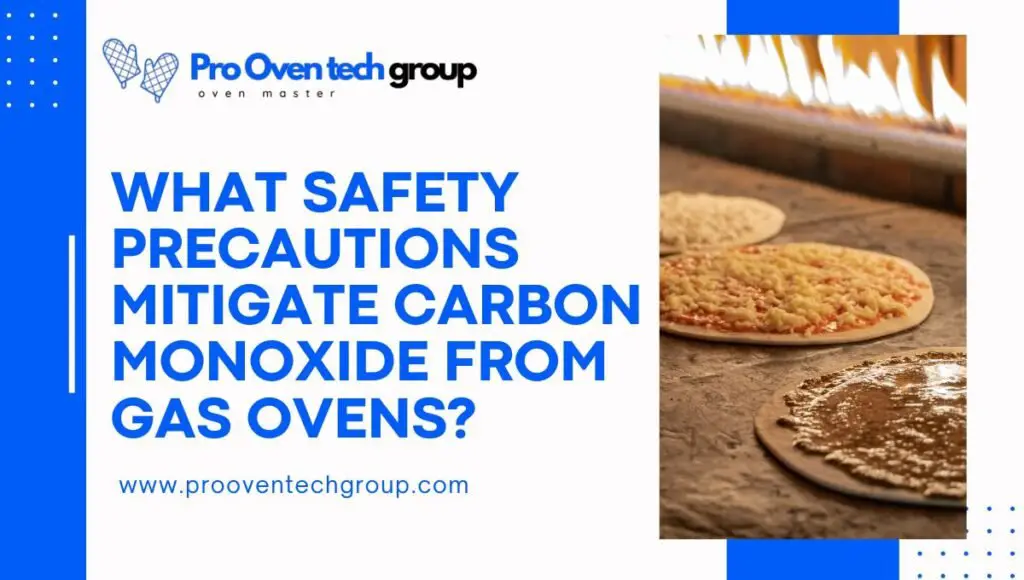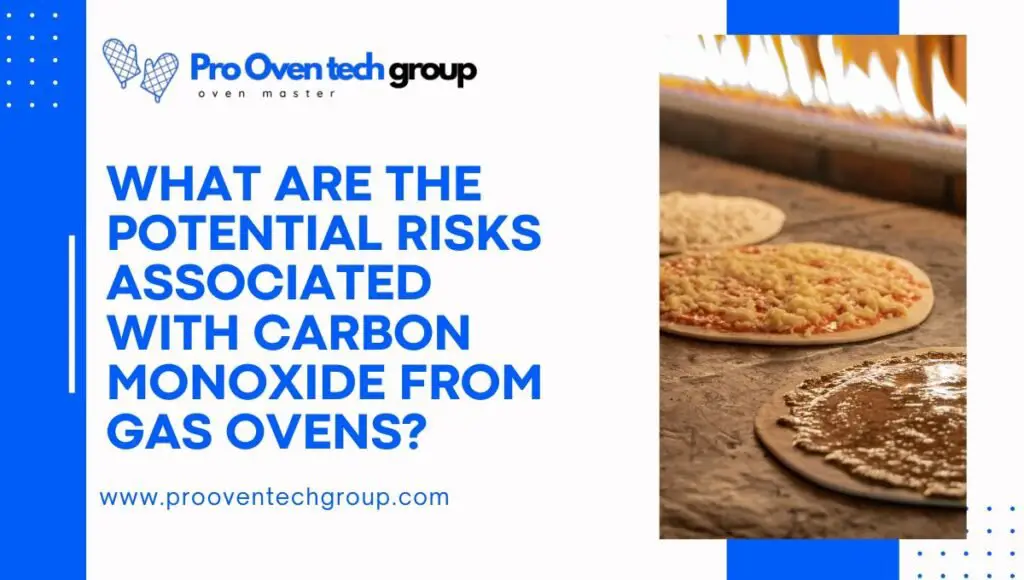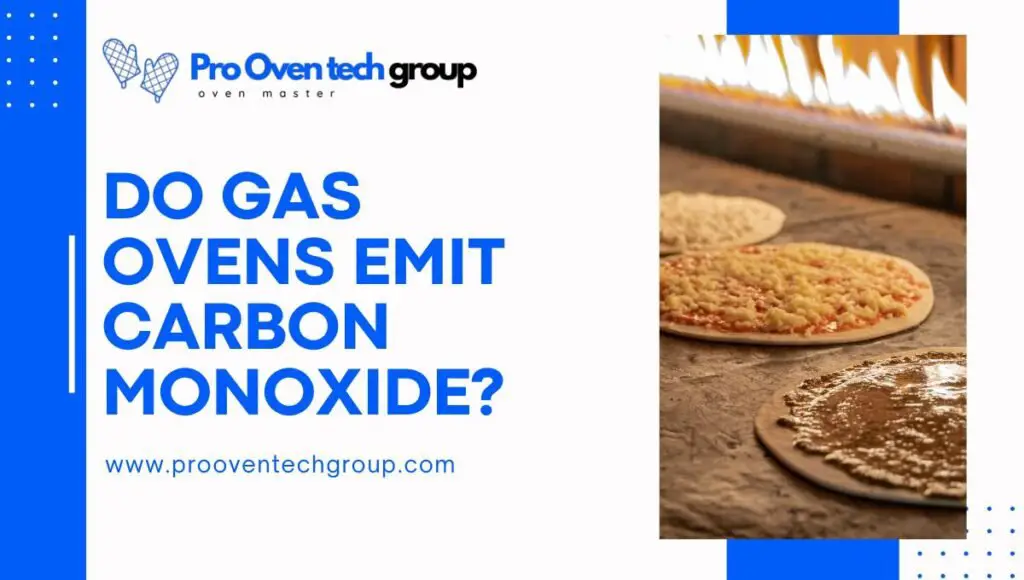Do gas ovens emit carbon monoxide? Gas ovens, a common appliance in many households, have raised concerns among homeowners and health experts alike. The unease revolves around the potential health risks they may pose, especially in poorly ventilated kitchens or when used incorrectly.
Yes, gas ovens can emit carbon monoxide (CO), a colorless, odorless gas that can be hazardous to health in high concentrations. When gas does not burn fully due to insufficient air, carbon monoxide is produced, posing a risk of CO poisoning if the area is not well-ventilated.
The discussion about the emission of carbon monoxide from gas ovens is not just about the appliance itself but also about user practices and the environment in which it is utilized. It underscores the importance of awareness and preventive measures to ensure the safe use of gas ovens in homes.
Table of Contents
What is Carbon Monoxide?
Carbon Monoxide (CO) is a sneaky guest that can cause a lot of trouble without even being seen or smelled. It’s a gas that comes from burning fuels like those in cars, stoves, and yes, even our trusty gas ovens.
The truth is, CO can be quite dangerous if it gets too cozy in our homes, since breathing too much of it can make us feel pretty sick. But don’t worry, with a little knowledge and some caution, we can keep our homes safe and sound.
How Do Gas Ovens Work?
Gas ovens are kitchen marvels, turning what we know into delicious meals through the power of controlled flames. They work by mixing natural gas with air, igniting the mixture to create heat. This process, when properly managed, cooks food evenly while offering a unique flavor profile.
Key Components of a Gas Oven
- Control Knobs: Dial up the heat, set the mood.
- Burner Assembly: Where gas meets air, magic happens.
- Ignition System: A spark that starts culinary journeys.
How the Flame Cooks Food
- Even Heat Distribution: Like a warm hug for your roast.
- Direct Flame Contact: Searing, toasting, crisping to perfection.
- Moist Cooking Environment: Keeps cakes fluffy, breads tender.
Safety Features
- Automatic Shut-off: Safety first, no gas leaks here.
- Ventilation System: Breathes out toxins, inhales fresh air.
- Heat Regulators: Keeps the temperature just right, always.
Fuel Consumption
- Energy Efficient: Cooks fast, saves gas, loves Earth.
- Temperature Control: Low flame for simmer, high for boil.
- Cost-Effective: Feasts on pennies, not dollars.
Maintenance Tips
- Regular Cleaning: Keeps it shining, functioning smoothly.
- Inspection Routine: Spots troubles before they crash dinner.
- Professional Servicing: Checks and balances for peace of mind.
What safety precautions mitigate carbon monoxide from gas ovens?

Safety precautions are key to mitigating carbon monoxide (CO) emissions from gas ovens, ensuring a safe cooking environment. By adopting simple measures, you can significantly reduce the risk of CO exposure and enjoy peace of mind while cooking your favorite meals.
Four Steps to Mitigate CO Emissions
1. Ventilation Magic
- Open windows or use an extractor fan.
- Ensures fresh air circulates while cooking.
- Helps dispel any CO build-up quickly.
- A breath of fresh air for your kitchen.
2. Regular Oven Check-ups
- Schedule annual inspections by professionals.
- They assess and tune-up your oven’s performance.
- Keeps the burner assembly in top shape.
- Prevents CO from crashing your dinner plans.
3. CO Detector Installation
- Install near the kitchen, but not too close to the oven.
- Alerts you to unsafe CO levels instantly.
- Acts as your silent guardian, always on watch.
- Peace of mind, knowing your home is monitored.
4. Educate & Inform
- Learn the signs of CO exposure.
- Educate family and roommates on CO safety.
- Know when to evacuate and seek help.
- Knowledge is power, especially in safety.
Are there effective monitoring methods for carbon monoxide in kitchens?
Certainly! Having effective monitoring methods for carbon monoxide in your kitchen is crucial to ensure safety and prevent CO poisoning. These strategies help detect and manage CO levels, safeguarding the well-being of everyone in the household.
1. Carbon Monoxide Detectors
- Placement Matters: Install CO detectors at least 15 feet away from the oven to avoid false alarms.
- Stay Alert: These devices alert you the moment CO levels are elevated, acting as an early warning system.
2. Smart Home Systems
- Integration: Connect CO detectors to your smart home system for real-time alerts on your devices.
- Convenience: Offers peace of mind with the ability to monitor your home’s air quality anytime, anywhere.
3. Regular Air Quality Tests
- Professional Check-ups: Hire professionals to conduct air quality tests in your home annually.
- Preventive Measure: Helps identify unseen problems, ensuring your kitchen’s environment is safe.
4. Visual Inspection
- Watch the Flame: A blue flame indicates good combustion; yellow or orange flames suggest inadequate burning and possible CO.
- Routine Checks: Regularly check your oven and venting systems to ensure they are working correctly and are not blocked.
Remember, these practices are not just for safety but also for the comfort and assurance they bring into your home.
What measures can homeowners take to prevent carbon monoxide exposure from gas ovens?
| Prevention Measures for Carbon Monoxide Exposure from Gas Ovens |
|---|
| 1. Proper Ventilation |
| Ensure adequate ventilation in the kitchen area to allow proper airflow and the dispersal of any emitted gases. |
| 2. Regular Maintenance |
| Schedule regular maintenance checks for the gas oven, including inspections of the burner, flue, and ventilation system, to ensure proper functioning and reduce the risk of carbon monoxide leaks. |
| 3. Installation of Carbon Monoxide Detectors |
| Install carbon monoxide detectors near the kitchen area and ensure they are in good working condition, regularly testing and replacing batteries as needed. |
| 4. Professional Installation |
| Have gas ovens professionally installed by certified technicians to ensure proper setup and minimize the risk of gas leaks. |
| 5. Avoiding Blocked Ventilation |
| Keep oven vents and surrounding areas clear of any obstructions to allow for the free flow of air and prevent the buildup of carbon monoxide. |
| 6. Educate Household Members |
| Educate all household members about the dangers of carbon monoxide poisoning and the importance of proper ventilation and safety precautions when using gas ovens. |
What are the potential risks associated with carbon monoxide from gas ovens?

Carbon monoxide from gas ovens poses serious health risks, including headaches, dizziness, and potentially fatal poisoning if not properly managed. Mitigating these risks involves maintaining good ventilation and ensuring your oven is functioning correctly.
- Always ensure proper kitchen ventilation while cooking.
- Regularly inspect and maintain your gas oven.
- Install carbon monoxide detectors near kitchens.
- Educate household members about CO safety.
- Use extractor fans to improve air circulation.
- Schedule professional oven inspections annually.
- Watch for yellow flames, indicating poor combustion.
- Keep windows open when using the oven for long periods.
In essence, staying safe from carbon monoxide involves vigilant maintenance and ensuring good air flow in your kitchen. It’s about keeping the air clear and your family secure.
Conclusion Do gas ovens emit carbon monoxide
In conclusion, the safety and well-being of household members should be the top priority when it comes to operating gas ovens. By implementing the measures discussed, such as maintaining good ventilation, conducting regular oven check-ups, and installing carbon monoxide detectors, homeowners can significantly minimize the risks associated with carbon monoxide exposure.
It’s essential to remember that staying informed and vigilant about CO safety can make all the difference. Taking proactive steps to ensure your kitchen is equipped with the right safety measures not only protects your loved ones but also contributes to a healthier, happier home environment.
FAQS
Q1. Do gas ovens emit carbon monoxide reddit?
A1. Yes, gas ovens emit carbon monoxide (CO) when not properly maintained or used without proper ventilation. It is essential to follow safety precautions and regularly inspect your oven to prevent CO emissions.
Q2. How do I know if my gas stove is leaking carbon monoxide?
A2. One of the signs of a carbon monoxide leak is a yellow or orange flame instead of a blue one. Other symptoms include headaches, dizziness, and nausea. It’s crucial to have a carbon monoxide detector installed near your kitchen to alert you to any elevated CO levels.
Q3. Carbon monoxide from gas stove left on?
A3. Yes, if a gas stove is left on, it can emit carbon monoxide into the air. It’s crucial to turn off your oven after use and ensure proper ventilation to prevent the build-up of CO.
Q4. Why do gas stoves not produce carbon monoxide?
A4. Gas stoves produce carbon monoxide when there is incomplete combustion due to inadequate oxygen supply or a malfunction in the burner assembly. Regular maintenance and proper ventilation can prevent this from happening. Overall, it’s crucial to prioritize safety measures and take proactive steps to mitigate potential CO risks in your kitchen. By doing so, you can create a safer environment for yourself and your loved ones while enjoying delicious meals made on your gas oven.
Q5. Do gas ovens give off carbon dioxide?
A5. No, gas ovens do not emit carbon dioxide (CO2). However, they can emit small amounts of carbon monoxide if not properly maintained or used without proper ventilation. CO2 is a natural byproduct of burning fuel, but it is usually safely vented out through the oven’s exhaust system.

